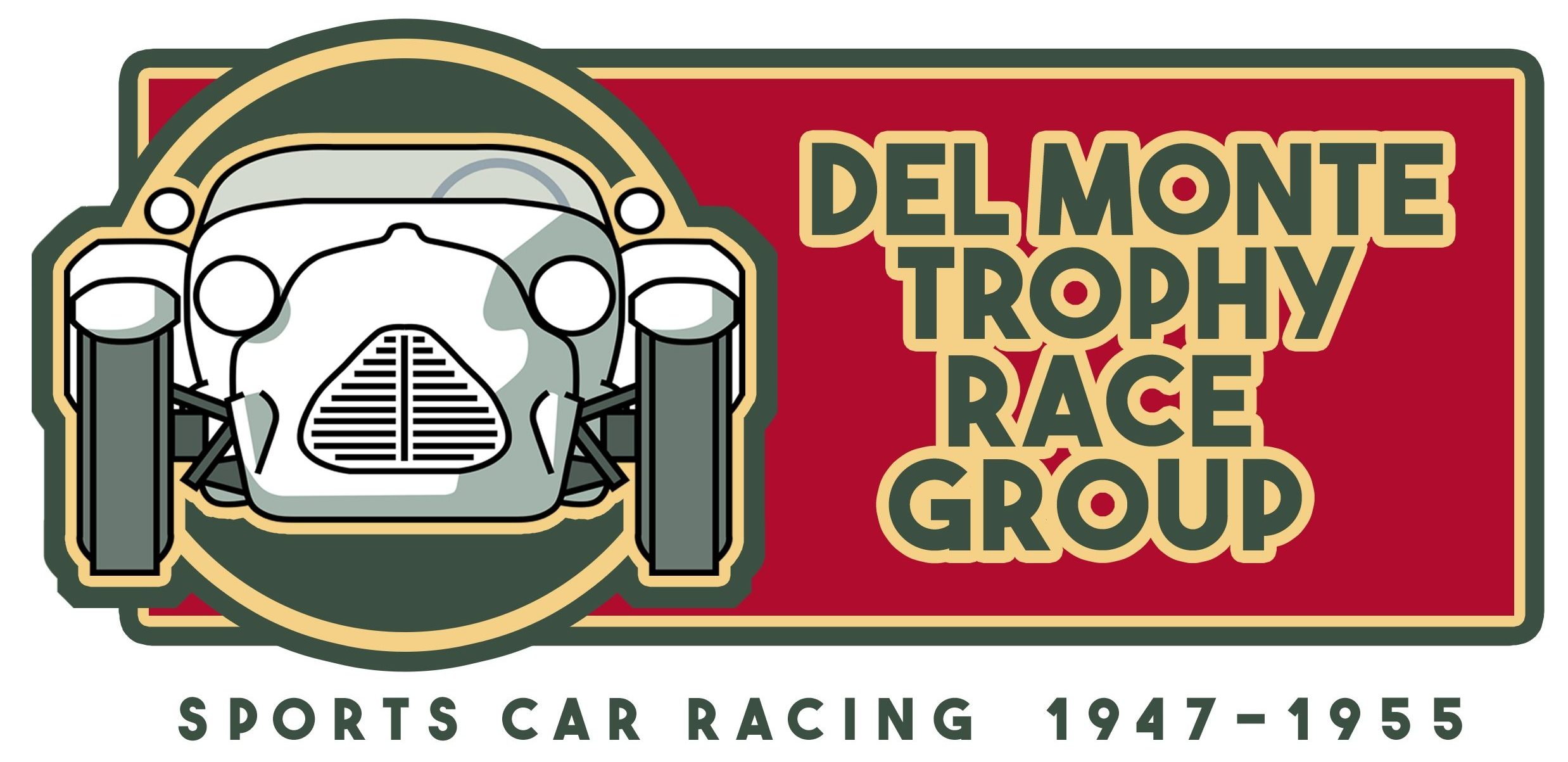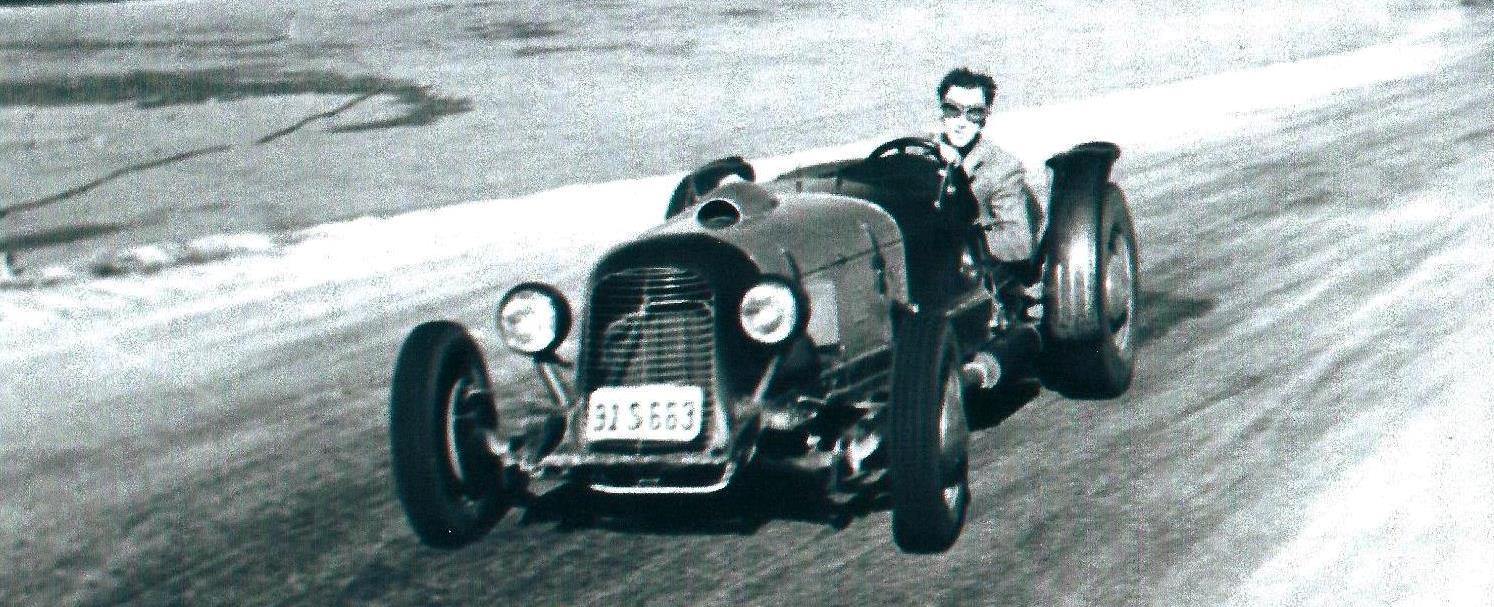1947 Baldwin Payne Special 91 S 663 (UK registration plate FTP 348). a unique and sophisticated junkyard dog.
Del Monte Trophy Race Group register No.43
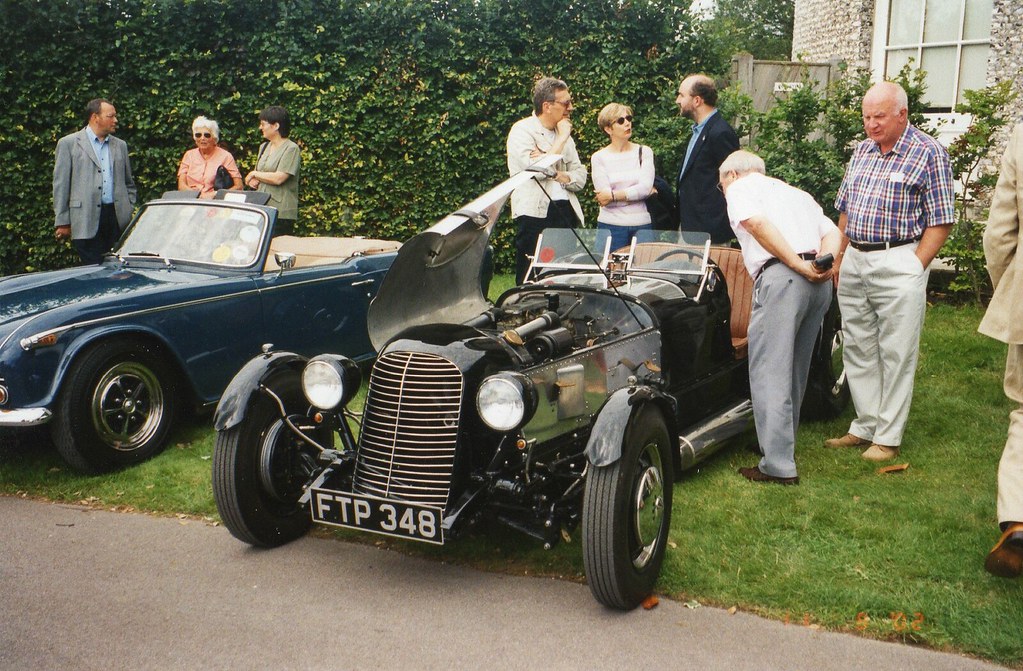
The Baldwin Payne Special is one of the most memorable ‘Sports Rods’ of the early post World War II days of the sports and racing car movement in America. This one is an A-V8, i.e. an A Type Ford chassis housing a Ford V8 motor while others are B-V8s on a B Type Ford chassis. Baldwin Payne can also be called a ‘California Hot Rod’ because it was built in 1946 to 1947 by Willis (Bill) Baldwin in Santa Monica, California. It has been cherished, displayed and competed for over 75 years on both sides of the Atlantic.
1947. The Baldwin Payne Special is the first of the 4 iconic specials that Baldwin built. He used a 1932 Ford chassis and suspension off current Fords, readily available in junkyards, hence the moniker or ‘Junkyard Dog’. The original engine was a Cadillac flat-head (side-valve) V8 with twin Stromberg carburetors. Englishman Philip Payne drove across the States in a Brooklands Riley, before working as a sports car mechanic at Roger Barlow’s International Motors in Los Angeles. When Bill Baldwin put his Special up for sale Payne got International Motors to loan him the money to buy it. Payne immediately replaced the Cadillac motor with a hot-rodded 4.4 litre (268.4 cubic inch) Mercury flat-head V8 with an Iskenderian track-grind cam, Evans 9:1 heads and triple-carb intake manifold, producing some 175 bhp @ 5,000 rpm. Drive was through a lightened flywheel, 10-inch Mercury clutch and three-speed Ford Pilot transmission with a home-built remote shift linkage to a 3.78:1 rear axle. The cowl covered a split-centre Ford radiator whilst the grille consisted of curved lengths of welding wire. The bonnet was of 20 gauge alloy and the air scoop from a North American aircraft, whilst an Auburn dash was used. Front cycle-type wings were made from spare wheel-cover bands. This specification is the same today, and running strong.
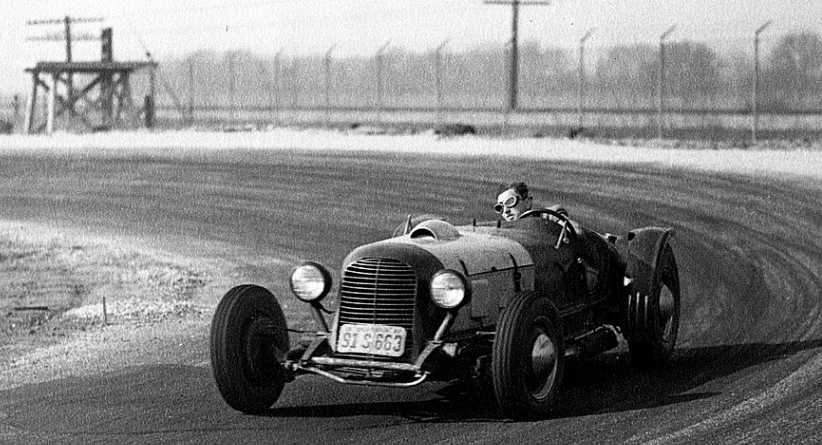
International Motors was the center of the early sports car movement in California. Its owners Roger Barlow (creator of other race specials) and Louis Van Dyke, a number of its employees including Philip Payne, Phil Hill and John von Neumann, various Hollywood movie stars and other clients, including Willis Baldwin, founded the California Sports Car Club (Cal Club) to organize competitions for their sports cars. Philip Payne was an active participant with his Baldwin Payne Special in all of the earliest Southern California speed trials, hill climbs and dry lakes events. He was an early member of the Cal Club and The Glendale Sidewinders (SCTA). Payne and his Baldwin Special proved very competitive, taking 1st in Class. and Best-Time-of-the-Day at Cal Club’s Tejunga Hill Climb; 1st at the Palos Verde Sprints in 1947; 1st in the Tommy Lee Shea Castle Sprints; 1st in the Sprint event and 1st in the Gold Cup Sports Cars versus Hot Rods Race held at the Davis Motor Company track in 1948. Payne recorded an 8.8 sec. 102.27 mph. (rolling) 1/4 mile run at the Cal Club/Russetta Timing Association meet at El Mirage dry lake in October of 1948. In 1949, Payne and his Special were 1st in class at the Cal Club Goleta Santa Barbara Sprints and 3rd at the SCCA Gold Creek Hill Climb.
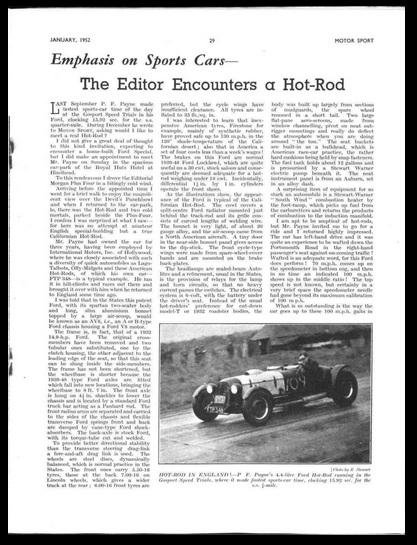
1950. In 1950, Philip Payne returned to Portsmouth, England, taking the car with him. He continued to successfully race the car through 1951; with the Southsea Motor Club events, held at the famous Goodwood circuit; and at the Gosport Speed Trials (fastest sports-car time of the day, clocking 15.02 seconds for the standing-start quarter-mile). Bill Boddy, having previously been very sceptical of the performance of Hot Rods, wrote a very favourable article in “Motorsport” of January 1952 (see below). This led to a very heated exchange editorials and letters to the editor between ‘Road and Track’ and ‘Motorsport’ magazines over the performance of American Hot Rods.
2001. Payne’s car was referred to in the UK as a Ford. Mercury and Ford flathead V8s are almost identical; Mercury crankshafts have a longer stroke and are identified by a dimple on the top of the crankshaft counter weight. They also have much larger oiling passages. Maybe it was easier to use a name, Ford, which was readily understood the other side of the pond. Note that the 24-stud-head Mercury flathead V8 was introduced in 1939. It was an upgrade of the 21-stud Ford V8 which was introduced in 1937. At 239 cubic inches the Mercury had a larger displacement than the Ford version due to a longer stroke and bigger bore. Payne’s 4.4 litre motor started in 1947 with a 239 cubic inch Mercury block. He then overbored it to 255 cubic inches, but that engine came out in 1949. That crank was used by Baldwin in the Baldwin Mercury Special.
The car stayed with the Payne household (Philip’s widow Vicky, and son Stephen) for 70 years, latterly maintained by Alan Collins, the Jaguar specialist, of Maldon, Essex. An overhaul was completed prior to the car’s appearance at the Cartier Style et Luxe at the 2001 Goodwood Festival of Speed, keeping the car original to its illustrious sports rod heritage. The car was invited to the Pebble Beach Concours d’Elegance in 2003. The 70 years of heritage provide the basis for the continued use of the name Baldwin Payne Special.
2018. Rob Manson of Carmel Valley CA, owner and driver of several California Hot Rod Road Racers, had found out about the Baldwin Payne when he lived and raced in the UK in 2011 to 2014 and he was able to purchase it in 2018 and ship it back to California. It continues to compete in vintage drag racing and hill climbs alongside its stable-mates including Rob’s 1949 Baldwin Mercury Special racer (http://www.dmtrg.com/rob-manson-1949-baldwin-mercury-special/).
** That engine, and those engines! The run-down by Rob Manson… Phil Payne built the motor for the Baldwin Payne Special (this page) on a Mercury Model 69A 239.4 CID Mercury/Ford motor. When Ford bought Mercury in 1935 they decided to develop a more powerful version of the 221CID Flathead V8 which had been introduced in 1932. This version was for the Mercury which was to be positioned in the market between the Ford and Lincoln. The resulting 239.4CID engine had Bore of 3.1875 and Stroke of 3.75. That engine was used in Mercury and eventually in Ford cars from 1939 through 1947. Horsepower was increased from 95 to the 100 generated by the Model 69A of 1946. This power increase was achieved through increased compression (from. 6.3:1 to 6.8:1). The Model 69A 100 hp version was used in both Mercury and Ford cars. To continue to differentiate Mercury cars the 239.4 CID was given a 4in stroke crank in 1948. This increased displacement to 255 CID. The 255 CID version was only used in Mercury cars. The Baldwin Mercury Special race motor (http://dmtrg.com/2017/08/03/rob-manson-1949-baldwin-mercury-special/) was built on the new 255CID motor.
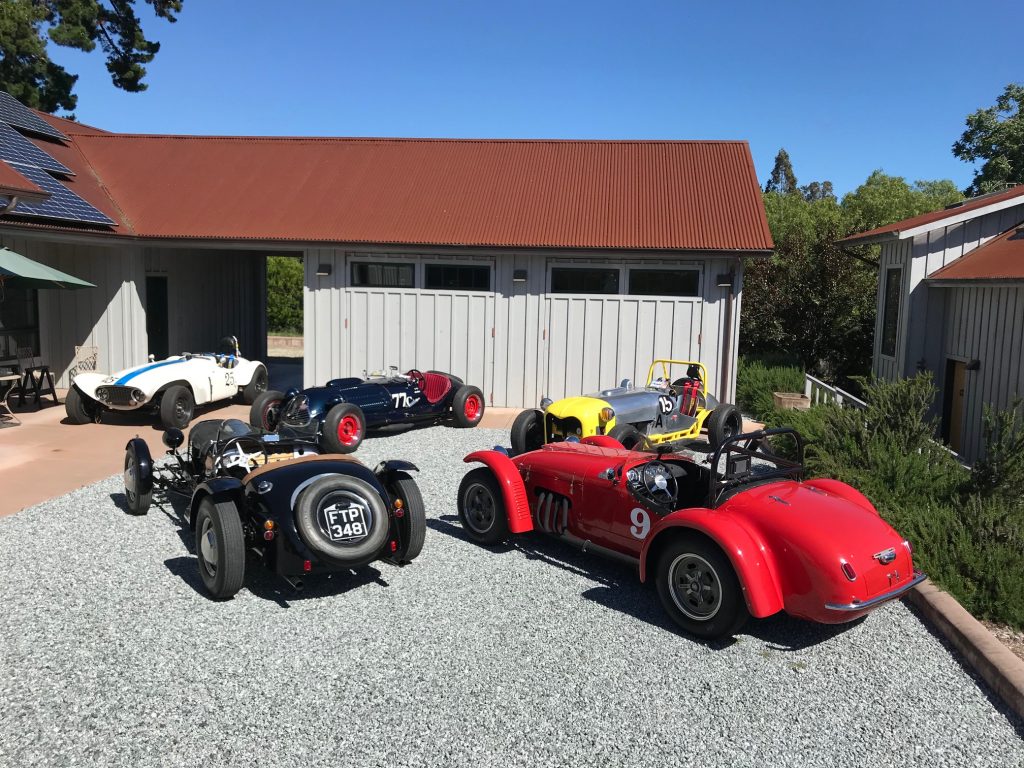
This tribute to the Baldwin Payne Special was compiled by Marcus Bicknell for the Del Monte Trophy Race Group website www.dmtrg.com from notes by Stephen Payne (carried on Tam’s Old Race Car site) and a piece by Rob Manson. The period write-up and road test of the car by the famous and characterful Bill Boddy appeared in Motor Sport in January 1952 https://www.motorsportmagazine.com/archive/article/january-1952/31/emphasis-on-sports-cars-3/,
the text reproduced below the image gallery.



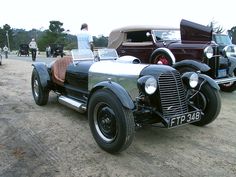

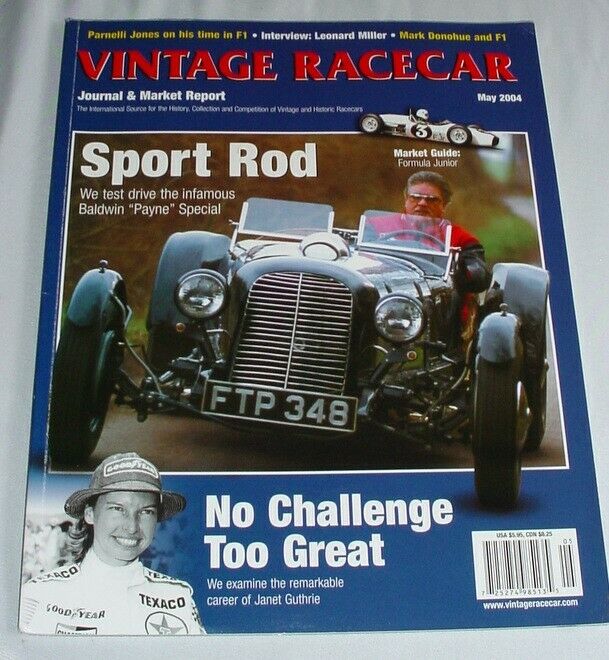
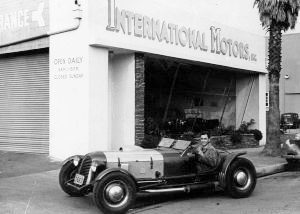
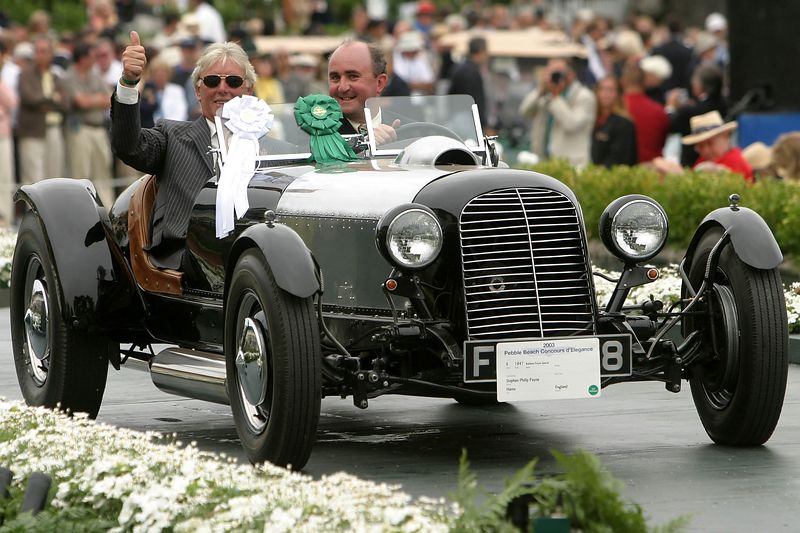
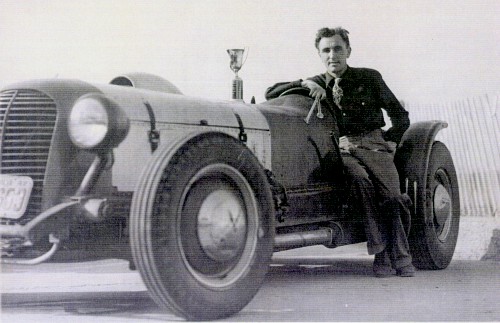
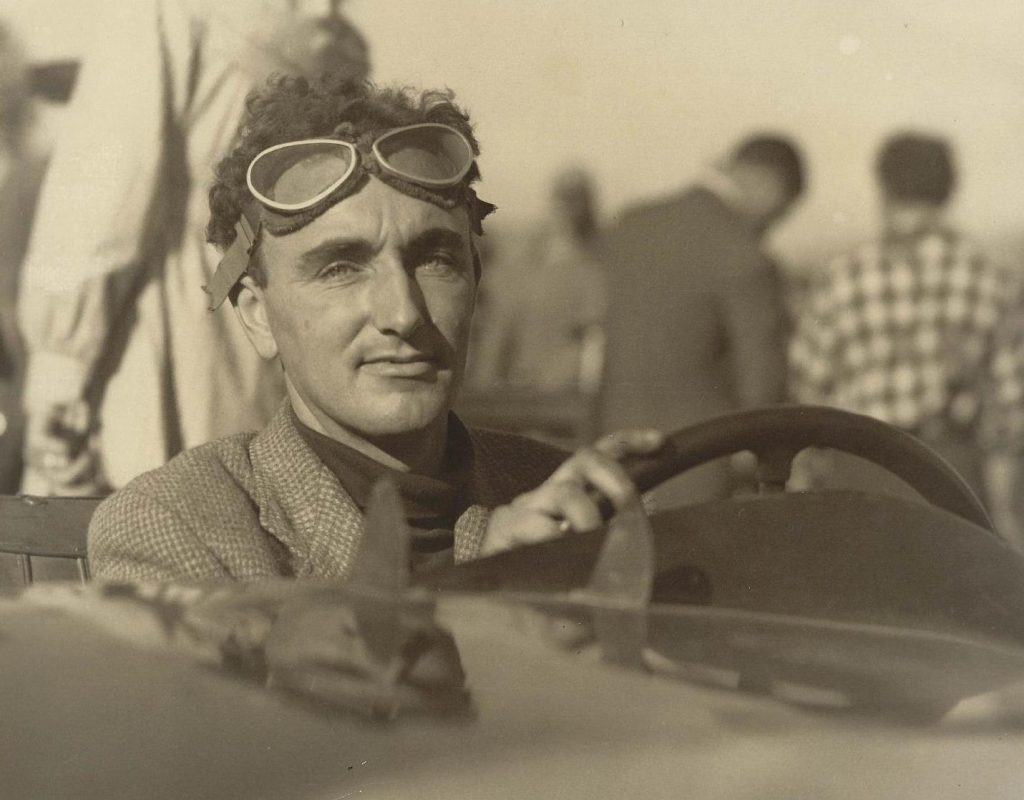
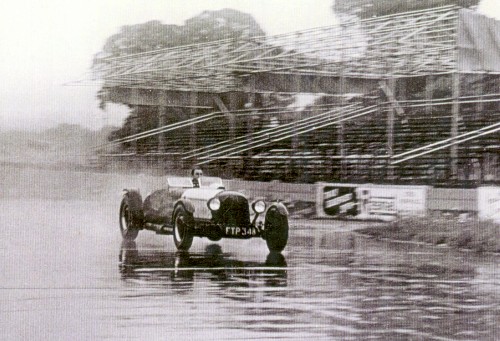

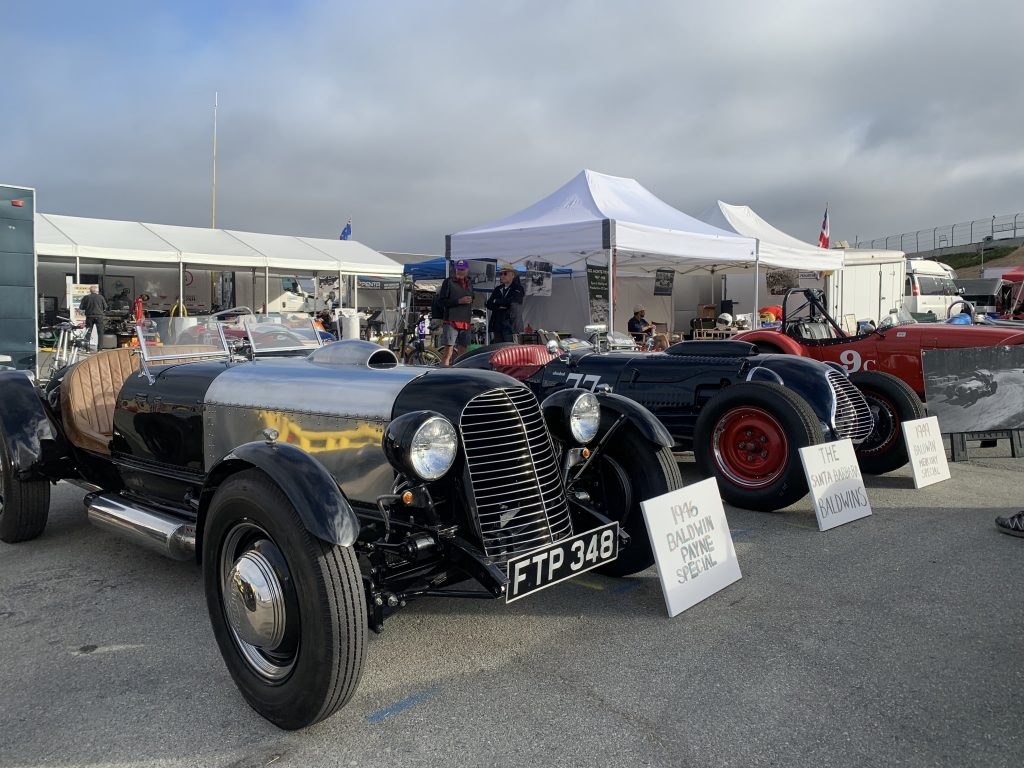
The Editor encounters a hot-rod
Last September PF Payne made fastest sports-car time of the day at the Gosport Speed Trials in his Ford, clocking 15.02 sec for the standing-start quarter-mile. During December he wrote to Motor Sport, asking would I like to meet a real trot-Rod ? I did not give a great deal of thought to this kind invitation, expecting to encounter a home-built Ford Special, but I did make an appointment to meet Mr Payne on Sunday in the spacious car-park of the Royal Huts Hotel at Hindhead. To this rendezvous I drove the Editorial Morgan Plus Four in a bitingly cold wind. Arriving before our appointed time I went for a brief walk to enjoy the magnificent view over the Devil’s Punchbowl and when I returned to the car-park, lo, there was the Hot-Rod and two cold mortals, parked beside the Plus-Four. I confess I was surprised at what I saw, for here was no amateur English special-building but a true Californian Hot-Rod. Mr Payne had owned the car for three years, having been employed by International Motors Inc of Hollywood, where he was closely associated with such a diversity of quick automobiles as Lago-Talbots, Offy-Midgets and these American Hot-Rods, of which his own car–FTP 348–is a typical example. He ran it in hill-climbs and races out there and brought it over with him when he returned to England some time ago.
I was told that in the States-this potent Ford, with its Spartan two-seater body and long slim aluminium bonnet topped by a large air-scoop, would be known as an AV8, ie an A or B-type Ford chassis housing a Ford V8 motor. The frame is, in fact, that of a 1932 14.9-hp Ford. The original cross-members have been removed and two tubular ones substituted, one by the clutch housing, the other adjacent to the leading edge of the seat, so that this seat can be slung inside the side-members. The frame has not been shortened, but the wheelbase is shorter because the 1939/48 type Ford axles are fitted which fall into new locations, bringing the wheelbase to 8 ft 7 in. The front axle is hung on 41/2 in shackles to lower the chassis and is located by a standard Ford truck bar acting as a Panhard rod. The front radius arms are separated and carried to the sides of the chassis and flexible transverse Ford springs front and back are damped by vane-type Ford shock-absorbers. The back-axle is stock Ford, with its torque-tube cut and welded.
To provide better directional stability than the transverse steering drag-link a fore-and-aft drag link is used. The wheels are steel discs, dynamically balanced, which is normal practice in the States. The front ones carry 5.50-16 tyres, those at the back 7.00-16 on Lincoln wheels, which gives a wider track at the rear ; 6.00-16 front tyres are preferred, but the cycle wings have limited clearance. All tyres are inflated to 35 lb/sq in.I was interested to learn that inexpensive American tyres, Firestone for example, mainly of synthetic rubber, have proved safe up to 130 mph in the 120° shade-temperature of the Californian desert ; also that in America a set of four costs less than a week’s wages! The brakes on this Ford are normal 1939/48 Ford Lockheed, which are quite useful on a 30 cwt stock saloon and consequently are deemed adequate for a hotrod weighing under 18 cwt. Incidentally, differential 1 in by 11/2 in cylinders operate the front shoes.
As the illustrations show, the appearance of the Ford is typical of the Californian Hot-Rod. The cowl covers a split-centre Ford radiator mounted just behind the track-rod and its grille consists of curved lengths of welding wire. The bonnet is very light, of about 20 gauge alloy, and the air-scoop came front a North American aircraft. A tiny door in the near-side bonnet panel gives-access to the dip-stick. The front cycle-type wings were made from spare-wheel-cover bands and are mounted on the brake back-plates. The headlamps are sealed-beam Autolites and a refinement, usual in the States, is the provision of relays for the lamp and horn circuits, so that no heavy currant passes the switches. The electrical system is 6-volt, with the battery under the driver’s seat. Instead of the usual hot-rodders’ preference for cut-down model-T or 1932 roadster bodies, the body was built up largely from sections of mudguards, the spare wheel recessed in a short tail. Two large flat-pane aeroscreens, made from window channelling pivot on neat outrigger mountings and really do deflect the atmosphere when you are doing around “the ton.” The seat buckets are built-in as a bulkhead, which is American race-car practice, the rather hard cushions being held by Snap fasteners. The fuel tank holds about 12 gallons and is pressurised by a Stewart Warner electric pump beneath it. The neat instillment panel is from an Auburn, set in an alloy dash.A surprising item of equipment for so stark an automobile is a Stewart-Warner “South Wind” combustion heater by the foot-ramp, which picks up fuel from the carburetters and returns the products of combustion to the induction manifold. I am apt to be sceptical of hot-rods, but Mr Payne invited me to go for a ride and I returned highly impressed. The car has left-hand drive and it was quite an experience to be wafted down the Portsmouth Road in the right-hand passenger’s seat against on-coming traffic! Wafted is an adequate word, for this Ford does perform! 70 mph comes up on the speedometer in bottom cog, and then in no time an indicated 100 mph shows up in the middle ratio! The top speed is not known, but certainly in a very brief spate the speedometer needle had gone beyond its maximum calibration of 100 mph.
What is so outstanding is the way the car goes up to these gaits in about a quarter of a mile, very smoothly, with no audible V8 beat from the exhausts and no noise whatsoever on the over-run.Taking over, I found the clutch and brake pedals high up to the left of a treadle-type accelerator which has a very light movement and a long-travel, but which appears to have been scientifically linked to the triple throttles. The gear lever is a delightful little thing, coupled to the box by long, exposed rods, which nestles by one’s right thigh. It works delightfully too. Almost from the desire to go, you are up into the 80s and the clean, smooth acceleration goes on and on, the speed up and up, only traffic checks calling a halt. The steering is very light indeed, but positive and quite high geared, although I found the Bugatti-like 16 in diameter, spring-spoke, rubber rimmed wheel from a midget racer startlingly small. We made the run on Pool petrol, whereas the engine prefers 80-octane, but I recall no pinking, while this “souped” V8 would run easily at 800 rpm in top gear. The rev-counter meant little, but I was told that 1,000 rpm in top gear equals 25 mph, and so we must have reached at least 4,500 rpm without any roughness or anxiety intruding.I only regret that the cold and the approach of darkness cut short our playtime, for I would dearly love to try this Ford along winding roads. As it was, I sampled it only on the straight, when it seemed to use a good deal of highway at 100 mph—but then, there was a fiendish cross-wind blowing. The ride was reasonably condonable, although the bonnet juddered about a bit.That easy, punch-in-the-back acceleration will live long in my memory and it does, indeed, represent over 100 mph at the end of a quarter-mile, a distance the car covered at Gosport in 15.92 sec, only 0.77 sec slower than J Goodhew’s P3 Alfa-Romeo which made fastest racing-car-time. (The course record, however, belongs to the AJB in 12.69 sec)The Ford also ran in the Southsea Speed Trials at Goodwood, taking Woodcote at speed in the wet. Last summer Mr. Payne took it on a 1,150 mile tour of our West Country, when it amused itself and its crew by reaching 50 mph on the steepest part of the old Porlock Hill after rounding the first corner at a crawl. That was on Pool, and the consumption averaged 21 mpg for the entire tour. No timed speeds have been recorded, but I am assured that with a standard engine giving 100 bhp the car was capable of 102 mph, and it is estimated that about 175 bhp is now developed at over 5,000 rpm. The height of the car is a mere 3 ft, so something in the region of 130 mph is thought to be available. Mr. Payne points out that since he has been in England street-racing against other hot-rods hasn’t been possible, nor are roller-dynamometers, exhaust gas analysers, carburetter-cleaning equipment or jet-flowmeters, etc, readily available. “Indeed,” he remarks, “only one mechanic in a thousand would know the figures for contact-breaker spring tension or understand rpm/vacuum ignition-advance curves. All are widely known in the U.S.A.
”You will guess that Mr Payne is hot-rod conscious and you will be right! “The fastest Ford roadsters will hit 116 mph in a standing quarter-mile,” he told me. “Most good Ford roadsters clock 120-125 mph with my brand of soup and I have less frontal area,” he continued, adding that “a good V8 revs, to over 6,500, and 240 bhp has been obtained with a sv V8 on alcohol.”I can well believe that he is able to tour up Portsdown Hill at 90-100 mph and I agree that his car gives racing-car acceleration—I smelt the rubber burning during our get-aways. . . .How is this performance obtained ? The engine is a 24-stud sv V8 set back about 15 in in the frame and over-bored 3/16 in, giving a capacity of 4.4-litres. This was done in the erroneous belief that there would be a 41/2-litre class in England, otherwise it would have been stroked 1 in, giving a full 5-litres. As it is, the stroke/bore ratio is 33/8 by 33/4 in. The block was ported and relieved but the ports weren’t polished, this being deemed a waste of time. Light three-ring solid-skirt pistons were fitted and the standard Ford crankshaft rebalanced to suit. Stocksize valves are used, but these were reshaped, the inlet seats cut at 30°. The flywheel was lightened and balanced. Evans 8 to 1 ribbed heads were fitted, these giving, with the overbore, an actual compression-ratio of 9 to 1. Evans triple inlet manifolds are used with three dd twin-choke Stomberg 97 carburetters of the type found on 1935-40 Fords. To ensure smooth running with the 900 crank the end carburetters are over the ports in the usual Ford criss-cross system. while the centre one fills in the large balance-pipes and comes in at over 8,500 rpm. Self-locking tappets and Zephyr single valve springs are employed. A single ignition distributor is fitted at present.Much of the car’s performance is attributed to a track-grind Iskenderian camshaft, which is a regrind of a standard Ford camshaft. Standard Ford cadmium-silver big-end bearings have proved satisfactory and Mr Payne deems Shell oil best for them. Incidentally, he runs with the oil-gauge disconnected and says the oil must get very hot, as not much is carried, but that the bearings give no trouble. No fan is needed, and Champion H9 plugs, as found in truck engines, are quite happy. Separate exhaust “headers” exhaust into 2-in-bore Servais silencers, which were made up specially and give remarkably quiet running.
The drive goes via a 10-in Mercury clutch, modified so that it will free at high rpm, to a Ford Pilot gearbox which contains 1942-type Lincoln Zephyr gears giving ratios of 1.0, 1.4 and 2.12 to 1, or overall ratios of 3.54, 5.07 and 7.5 to 1.The car weighs in road trim about 19 cwt (18 cwt 24 lb stripped), with a distribution that is approximately 50/50.Mr Payne suggests that those who want an inexpensive racing car should build up a “full-race” V8 instead of spending a lot of money on cars of “classic” type which often do not motor very rapidly. His Ford Hot-Rod certainly gives him authority for this viewpoint and I shall be interested to watch it perform against British and Continental sports-cars in this year’s speed events.—WB
